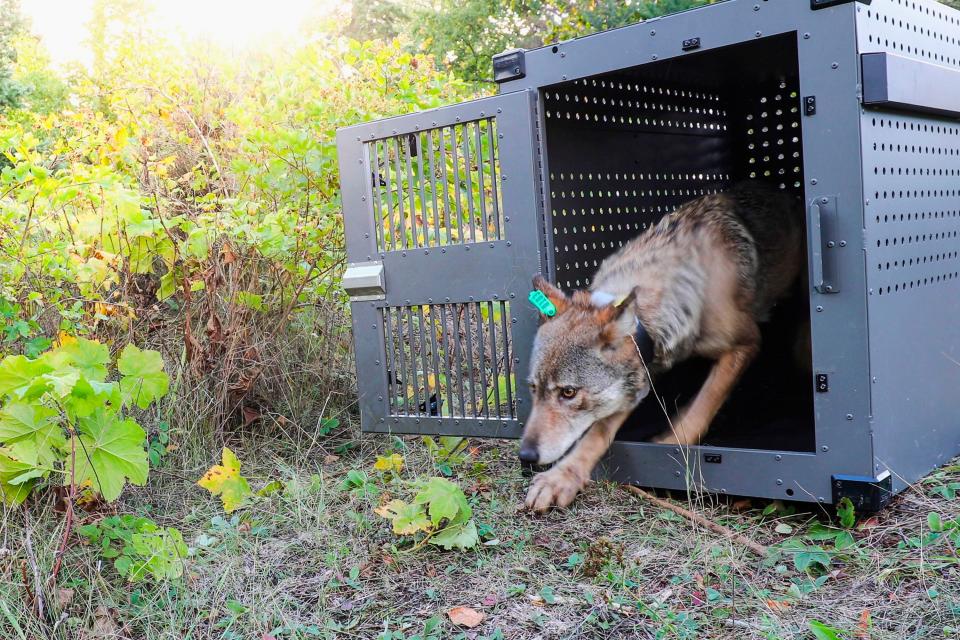Idaho seeks to kill more than 1,000 wolves as scientists urge Biden to restore animals’ endangered status

In an ongoing conflict between conservationists, hunters, and the agricultural sector, scientists are urging the Biden administration to restore legal protections for grey wolves, arguing that their removal earlier this year was premature.
They also argue that states are allowing too many animals to be killed, as Idaho approves legislation that would see 90 per cent of the 1,500 wolves in the state exterminated by private contractors.
The US Fish and Wildlife Service removed wolves from the endangered species list for most of the country in January in the final days of the Trump administration, in a move that Joe Biden ordered reviewed when he took office.
Idaho, Montana and Wyoming had federal protections lifted some years earlier and hunting is allowed in those states.
The removal of restrictions from the rest of the contiguous mainland US is causing great concern, with 115 scientists arguing in a letter to Interior Secretary Deb Haaland and principal deputy director of the Fish and Wildlife Service Martha Williams that the species population has not fully recovered to a desirable level.
Livestock farmers counter the claim and argue that there are too many wolves already, and they constitute a threat to their animals and businesses.
A government-sponsored campaign of poisoning and trapping saw that the predators were all but wiped out in the US by the 1930s.
Only a small population remained in the north towards the border with Canada. This has since grown to approximately 4,400 wolves across Michigan, Minnesota, and Wisconsin.
Another 2,000 live across six states in the northern Rockies and Pacific northwest after wolves from Canada were reintroduced in Idaho and Yellowstone National Park in the 1990s.
The Fish and Wildlife Service says that it is not necessary for wolves to be in every place they once inhabited for the species to be considered recovered.
In addition to Idaho’s plans to slaughter the wolf population in the state — using methods including night-vision equipment, and hunting via snowmobiles, ATVs, and helicopters — Montana and Wisconsin have also moved to cull the predators.
Montana has proposed similar legislation to Idaho, and Wisconsin held a hunt in February that saw 216 wolves killed, even though a quota of 119 had been set. Another hunt is planned for later in the year.
Legal challenges to get protections restored will soon move forward so that a resolution can be reached before any further hunts in the autumn.
Read More
Biden reverses last-minute Trump effort to loosen Arctic drilling restrictions
China’s greenhouse gas emissions exceed total of US and developed countries, report finds
World’s new net zero roadmap: What does it mean for fossil fuels in the UK?

 money
money 